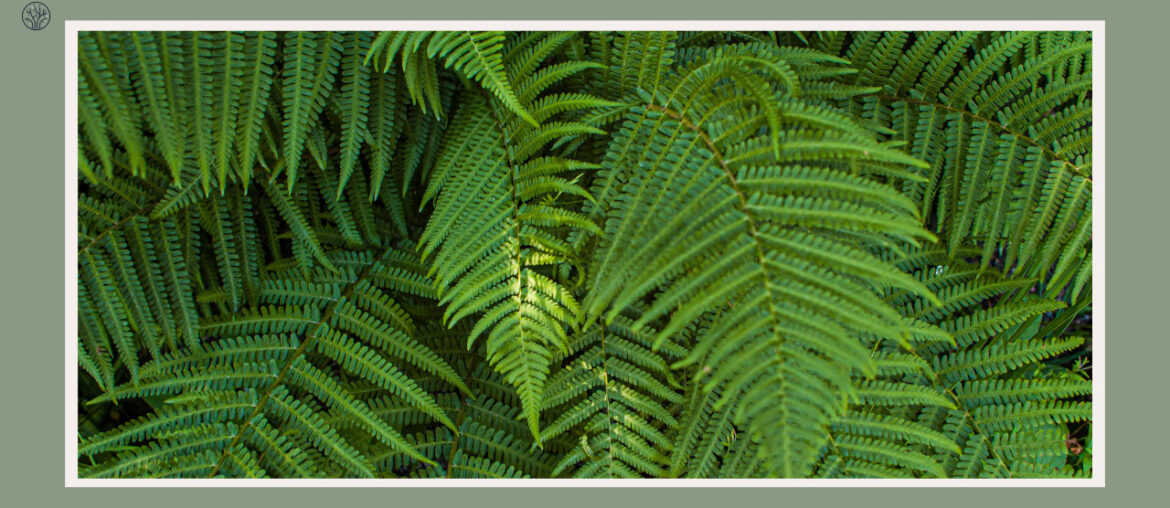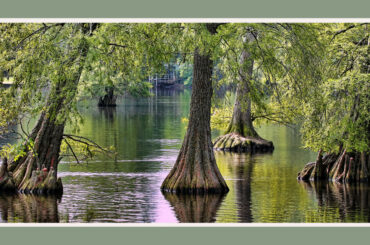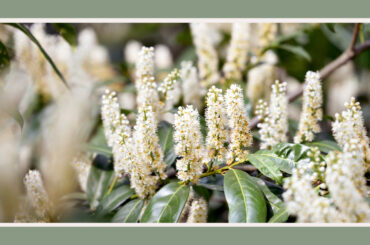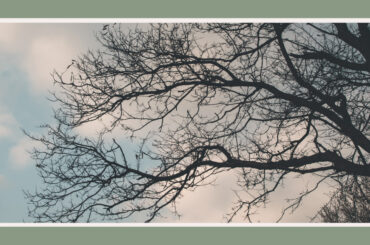Ferns, with their intricate leaves and exotic vibe, have a unique way of catching our eye. They can really spruce up a room or garden. The leaves, or fronds as they’re technically called, have this cool pattern—a main vein with little leaflets on each side. People don’t just love them for how they look; many believe they symbolize happiness and personal growth.
So, what if you love that fern look but want to mix things up a bit? You’re in luck. We’ve put together a list of trees with fern-like leaves. This way, you can keep that exotic feel going without just sticking to ferns.
- 1. Jacaranda
- 2. Royal Poinciana
- 3. Japanese Fern Tree
- 4. Velvet Mesquite Tree
- 5. Fern-Leaved Wattle
- 6. The Honey Locust
- 7. Copperpod
- 8. Golden Rain Tree
- 9. Staghorn Sumac
- 10. Comptonia Peregrina
- 11. Smooth Sumac
- 12. Fern Pine Columnar Tree
- 13. Mimosa
- 14. Soft Tree Fern
- 15. Hummingbird Tree
- Frequently Asked Questions:
1. Jacaranda
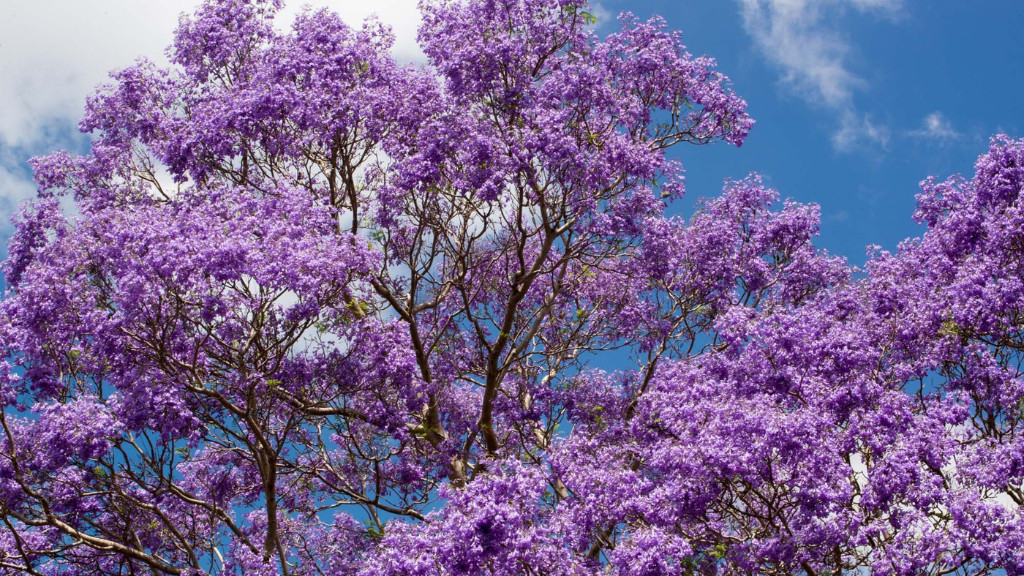
- Native Region: South America
- Leaf Length: Up to 20 inches
- Floral Display: Fragrant, purple blooms
- Climate Preference: Tropical to subtropical
- Special Features: Excellent for shade coverage
The Jacaranda tree is a tropical marvel originating from South America. Its fern-like leaves can stretch up to 20 inches, providing shade and aesthetic appeal. But the tree doesn’t stop at leaves; it also produces fragrant, purple blooms that add a splash of color to any landscape. Thriving in warm climates, the Jacaranda can grow rapidly in its early years, making it a popular choice for those looking to make a quick yet lasting impact.
2. Royal Poinciana
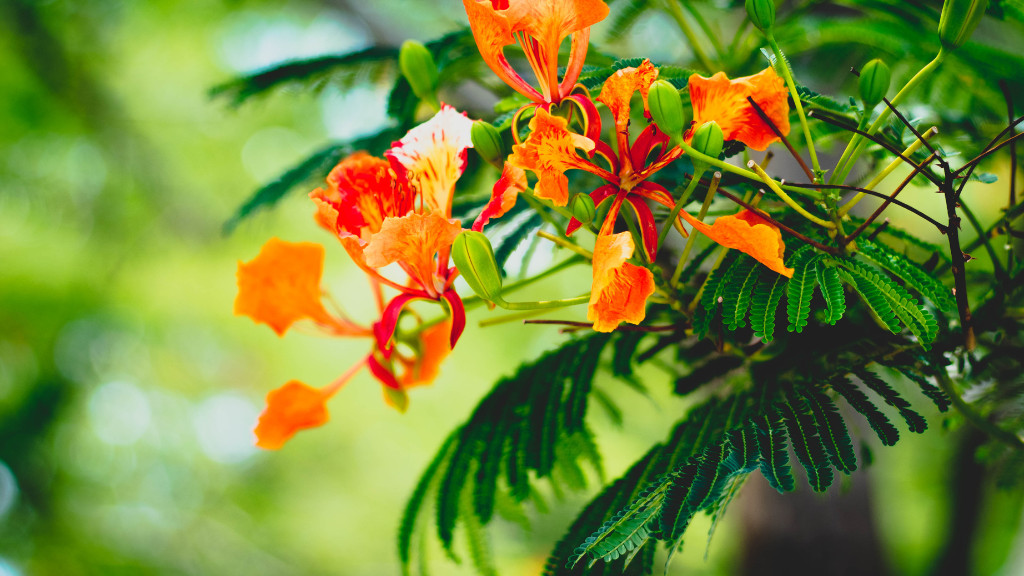
- Native Region: Madagascar
- Leaf Type: Fern-like, evergreen
- Floral Display: Vibrant orange to red flowers
- Height: Up to 40 feet
- Climate Preference: Tropical zones with full sun exposure
- Special Features: Provides light shade, adaptable to various soil conditions
The Royal Poinciana, native to Madagascar, is a showstopper in any garden. Its fern-like leaves are evergreen and serve as a beautiful backdrop to its vibrant orange-to-red flowers. The tree can reach heights of up to 40 feet and is highly adaptable, thriving in various soil conditions. It prefers tropical zones with full sun exposure but can adapt to cooler climates, where it may shed its leaves. Its delicate foliage offers light shade, making it a versatile addition to any landscape.
3. Japanese Fern Tree
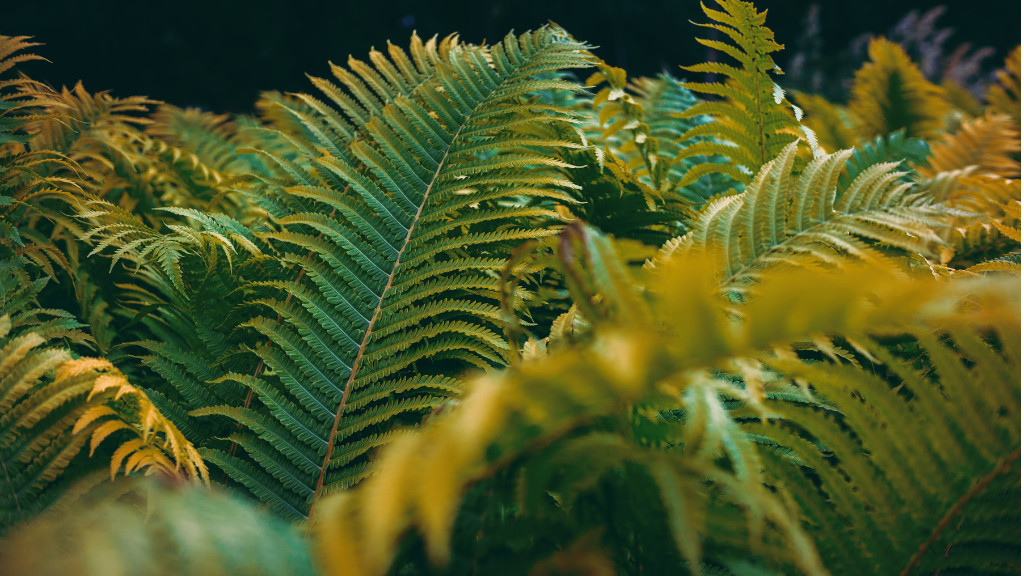
- Native Region: East Africa and South Asia
- Leaf Type: Bright-green, fern-like
- Floral Display: White clusters of blooms, occasionally small inedible berries
- Climate Preference: Warmer regions with full or partial sun
- Special Features: Low maintenance, naturally rounded crown of foliage
Don’t let the name fool you; the Japanese Fern Tree is neither a fern nor native to Japan. Originating from East Africa and South Asia, this tree boasts dense, bright-green, fern-like leaves. It’s an evergreen species that prefers warmer climates and days of full or partial sun. The tree produces white clusters of blooms once a year and sometimes even small inedible berries. With a naturally rounded crown of foliage, this tree is a low-maintenance option that can add a touch of elegance to your yard.
4. Velvet Mesquite Tree
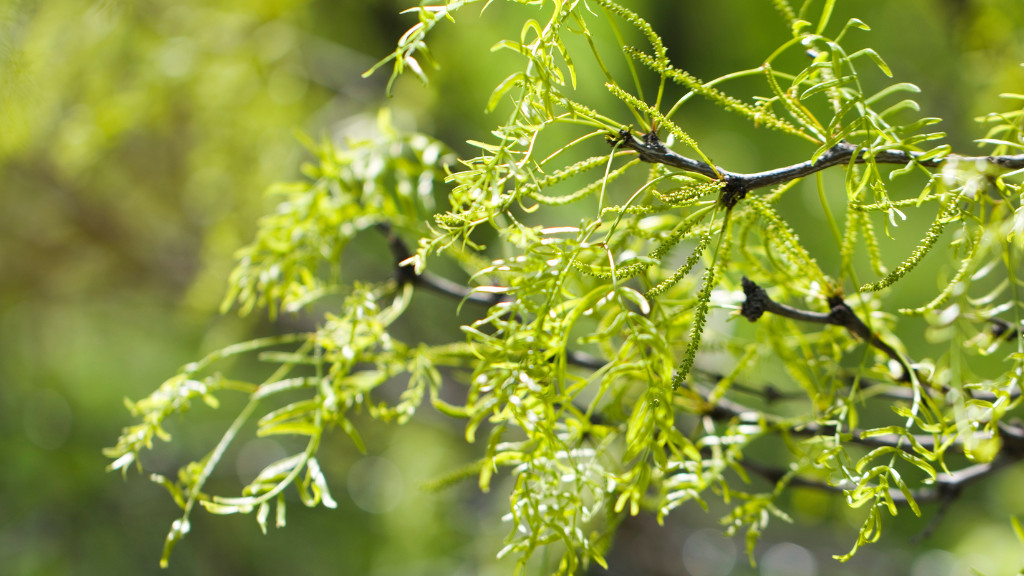
- Native Region: Southwestern US and Mexico
- Leaf Type: Short, dark-green, fern-like
- Height: 30 to 50 feet
- Climate Preference: Dry, arid climates
- Special Features: Deep roots, source of nectar for honey bees
The Velvet Mesquite Tree is a native of the arid regions of the southwestern US and Mexico. Recognizable by its short, dark-green, fern-like leaves, this tree can grow up to 50 feet. It’s well-suited for dry climates and has deep roots that can tap into underground water sources. The tree also serves as an excellent source of nectar for honey bees, making it an eco-friendly addition to your garden.
5. Fern-Leaved Wattle
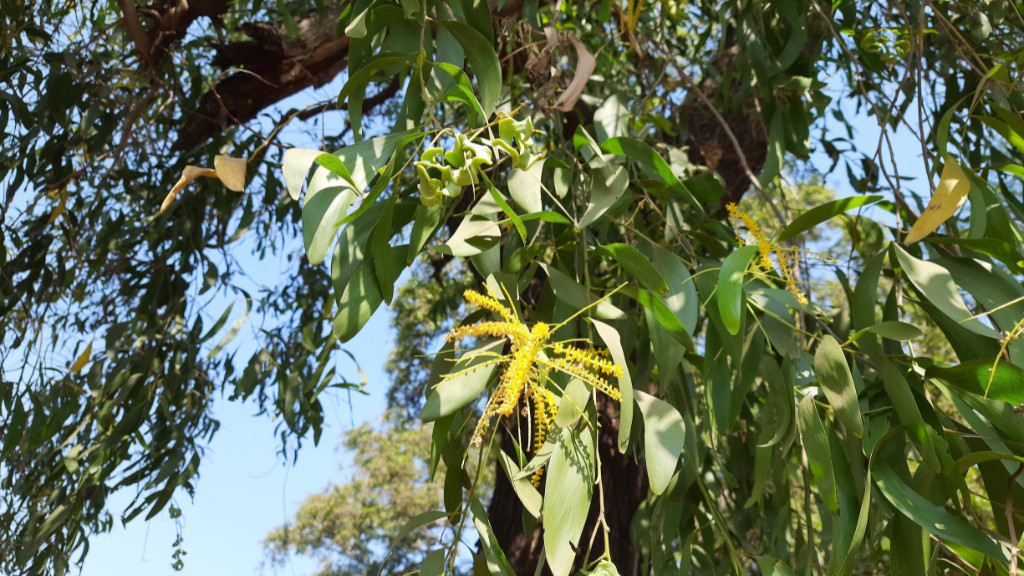
- Native Region: Eastern Australia
- Leaf Type: Compound leaves similar to ferns
- Height: Up to 50 feet
- Lifespan: Approximately 25 years
- Floral Display: Yellow blooms from autumn to late spring
- Special Features: Short lifespan but rapid growth
The Fern-Leaved Wattle, native to Eastern Australia, is a part of the legume family, Fabaceae. Its compound leaves bear a striking resemblance to ferns, and the tree can reach heights of up to 50 feet. Although it has a relatively short lifespan of around 25 years, it grows rapidly. From autumn to late spring, the tree produces bright yellow flowers, adding a pop of color to your garden.
6. The Honey Locust
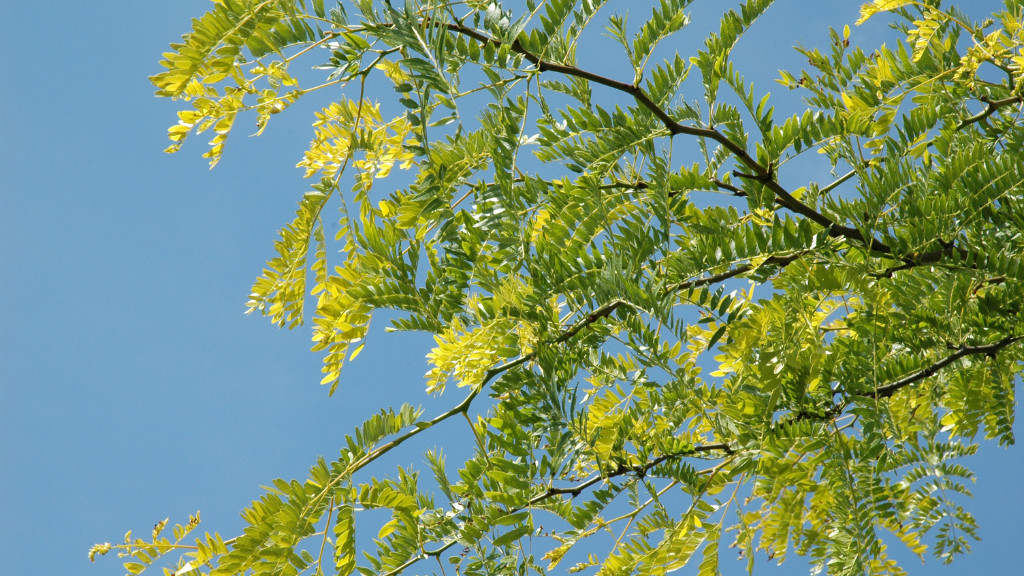
- Native Region: Central North America
- Leaf Type: Fern-like with bright-green leaflets
- Height: Up to 98 feet
- Lifespan: Up to 120 years
- Climate Preference: Sunny locations with rich soil
- Special Features: Dense foliage for shading, edible seed pods
The Honey Locust, native to central North America, is a versatile tree known for its dense foliage and fern-like leaves. It can grow up to 98 feet and has a lifespan that can extend up to 120 years. The tree thrives in sunny locations with rich soil and is known for its edible seed pods, which have a sweet taste. Its dense foliage provides excellent shade, making it a popular choice for both ornamental and functional purposes.
7. Copperpod
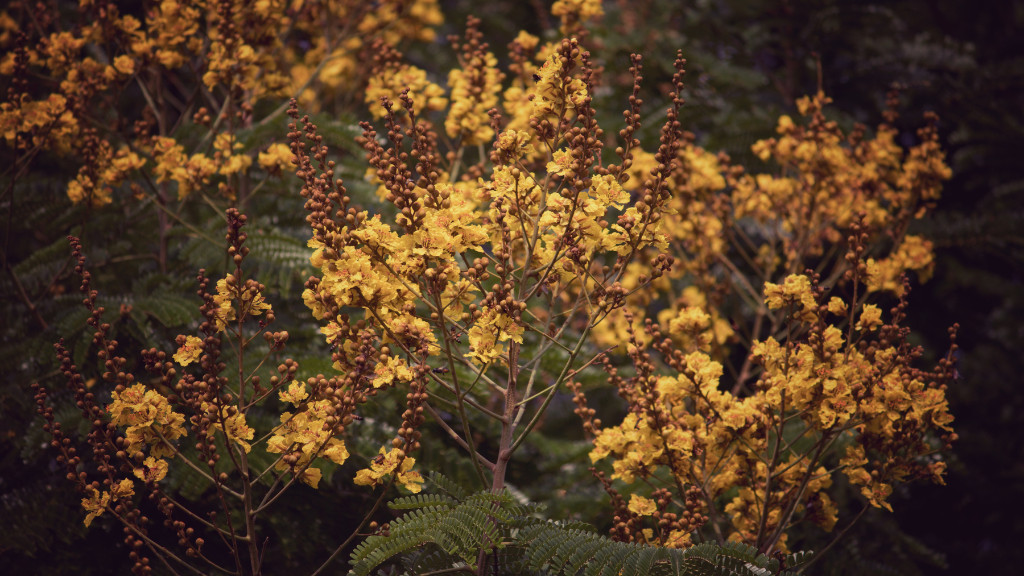
- Native Region: Tropical Southeastern Asia
- Leaf Type: Fern-like with bipinnate leaves
- Height: Up to 80 feet, sometimes more
- Floral Display: Yellow blooms, decorative red as months evolve
- Climate Preference: Large amount of sun, moderate watering
- Special Features: Known for its yellow and red blooms
The Copperpod, native to tropical southeastern Asia, is a towering tree that can grow up to 80 feet or even more. Its fern-like leaves are bipinnate, each featuring 20 to 40 oval leaflets. The tree is known for its yellow blooms, which can turn decorative red as the seasons change. It requires a large amount of sun and moderate watering, making it a relatively low-maintenance choice for those living in suitable climates.
8. Golden Rain Tree
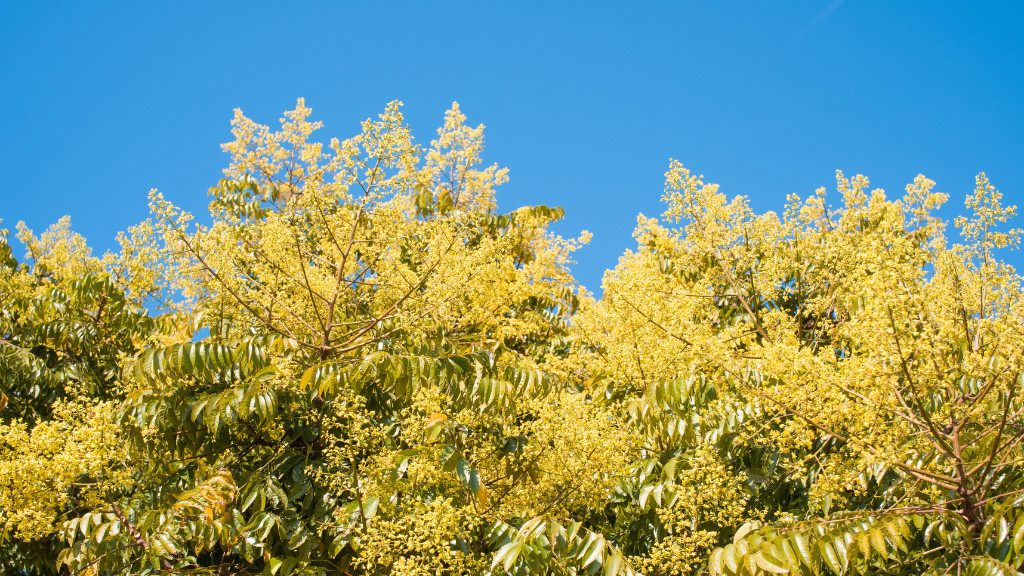
- Native Region: Unknown, but widely cultivated
- Leaf Type: Fern-like
- Height: Up to 40 feet
- Floral Display: Golden flowers
- Climate Preference: Adaptable, but prefers well-drained soil
- Special Features: Less likely to cause plumbing or foundation issues
The Golden Rain Tree is a versatile addition to any landscape. While its native region is not definitively known, it has been widely cultivated for its beauty. The tree can grow up to 40 feet and features fern-like leaves. It is most famous for its golden flowers, which add a touch of elegance to any garden. The tree is adaptable to various soil conditions but prefers well-drained soil. One of its unique features is that it’s less likely to cause plumbing or foundation issues compared to other trees.
9. Staghorn Sumac
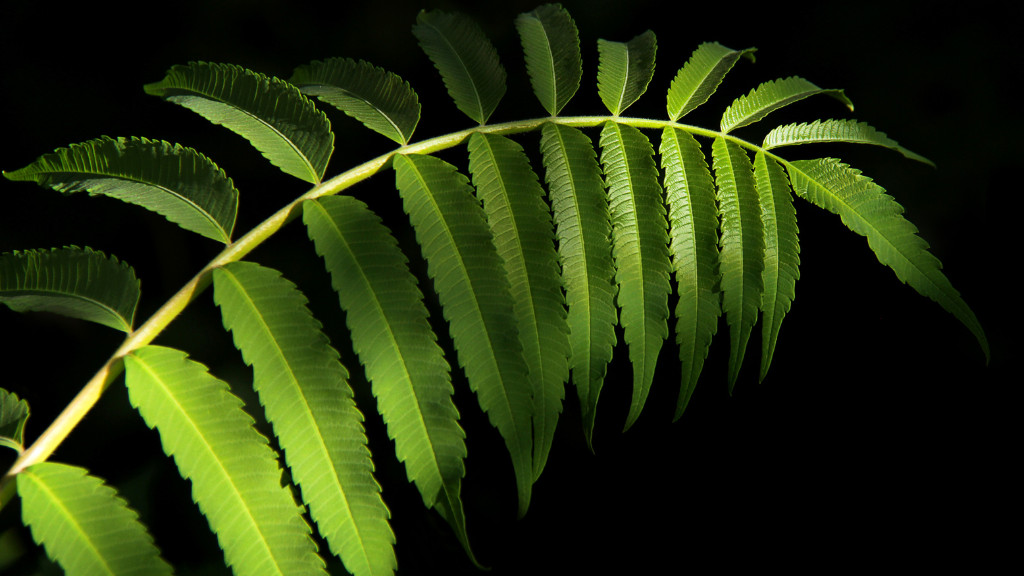
- Native Region: Eastern North America
- Leaf Type: Fern-like, compound leaves
- Height: 15 to 30 feet
- Floral Display: Reddish fruit clusters
- Climate Preference: Adaptable to various conditions
- Special Features: Drought-resistant, attracts wildlife
The Staghorn Sumac, native to eastern North America, is a small tree or large shrub that can grow between 15 to 30 feet. Its fern-like, compound leaves make it a unique addition to any garden. The tree produces pinkish leaves that not only add visual interest but also attract various forms of wildlife. One of its standout features is its drought resistance, making it a hardy choice for various climates.
10. Comptonia Peregrina
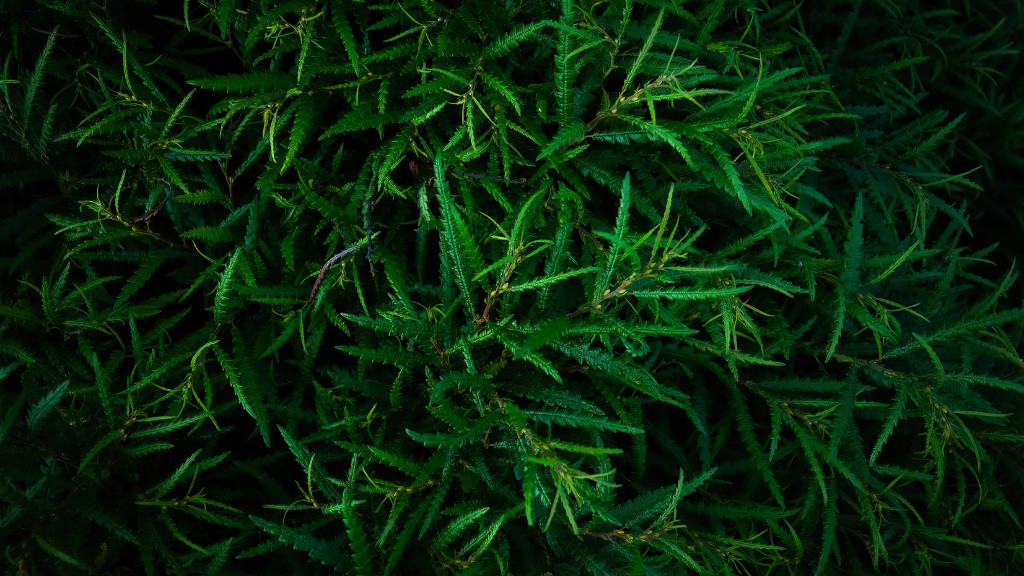
- Native Region: Eastern North America
- Leaf Type: Fern-like, sweet-smelling when crushed
- Height: 2 to 3 feet
- Climate Preference: Prefers acidic, sandy, or rocky soils
- Special Features: Aromatic leaves, used in traditional medicine
Also known as Sweetfern, Comptonia Peregrina is a small shrub native to eastern North America. Despite its name, it’s not a fern but has fern-like leaves that emit a sweet smell when crushed. This aromatic feature makes it a unique addition to any garden. The shrub prefers acidic, sandy, or rocky soils and can grow up to 2 to 3 feet. Its leaves have been used in traditional medicine, adding another layer of interest to this versatile plant.
11. Smooth Sumac
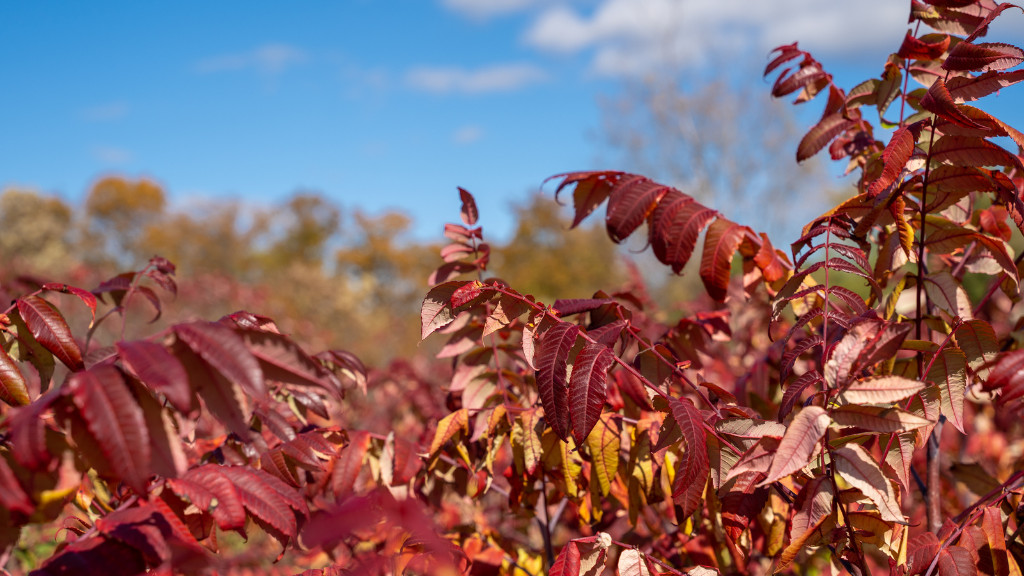
- Native Region: North America
- Leaf Type: Fern-like, turning red in autumn
- Height: Up to 20 feet
- Floral Display: Red fruit clusters
- Climate Preference: Adaptable to various conditions
- Special Features: Brilliant fall foliage, attracts birds
The Smooth Sumac is a North American native known for its fern-like leaves that turn a brilliant red in the autumn. The tree can grow up to 20 feet and is adaptable to a variety of soil and climate conditions. It produces red fruit clusters that attract birds, making it a great choice for those looking to add some wildlife to their garden. Its brilliant fall foliage is a visual treat, making it a popular choice for those looking to add seasonal color to their landscape.
12. Fern Pine Columnar Tree
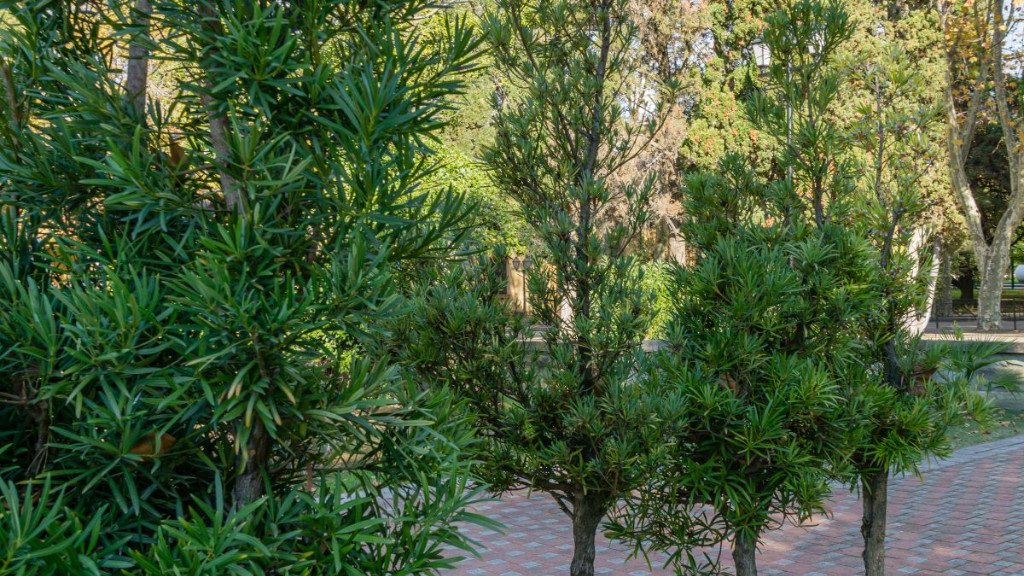
- Native Region: Eastern Africa
- Leaf Type: Fern-like, evergreen
- Height: Up to 50 feet
- Climate Preference: Warm, humid climates
- Special Features: Columnar shape, low maintenance
The Fern Pine Columnar Tree, originating from Eastern Africa, is an evergreen tree that can grow up to 50 feet. Its fern-like leaves and columnar shape make it a unique choice for landscaping. The tree thrives in warm, humid climates and is relatively low maintenance, requiring minimal pruning to maintain its shape.
13. Mimosa

- Native Region: Southwestern Asia, Middle East
- Leaf Type: Fern-like, bipinnate leaves
- Height: 20 to 40 feet
- Floral Display: Pink, puffball-like flowers
- Climate Preference: Warm, temperate zones
- Special Features: Fast-growing, drought-resistant
The Mimosa tree, native to southwestern Asia and the Middle East, is a fast-growing tree that can reach heights between 20 to 40 feet. Its fern-like, bipinnate leaves serve as a backdrop to its unique pink, puffy flowers like those of cottonwoods. The tree is drought-resistant and thrives in warm, temperate zones, making it a resilient choice for various landscapes.
14. Soft Tree Fern
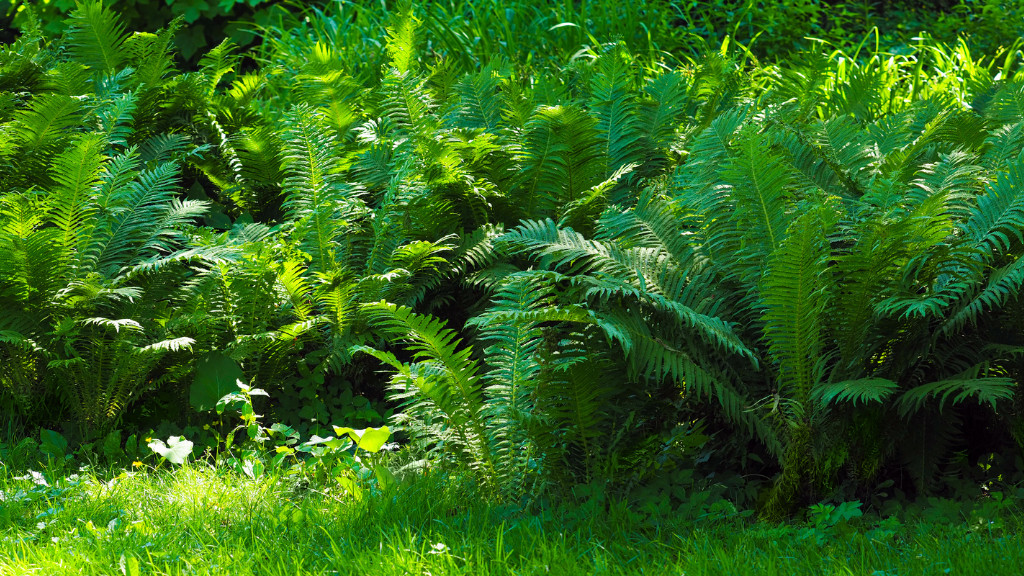
- Native Region: Australia, New Zealand
- Leaf Type: Fern-like, naturally
- Height: Up to 20 feet
- Climate Preference: Humid, shaded areas
- Special Features: Slow-growing, prehistoric appearance
The Soft Tree Fern, native to Australia and New Zealand, is unique in that it is actually a fern, not a tree. However, it can grow up to 20 feet, giving it a tree-like appearance. It prefers humid, shaded areas and is slow-growing. Its prehistoric appearance adds a touch of ancient beauty to modern gardens.
15. Hummingbird Tree
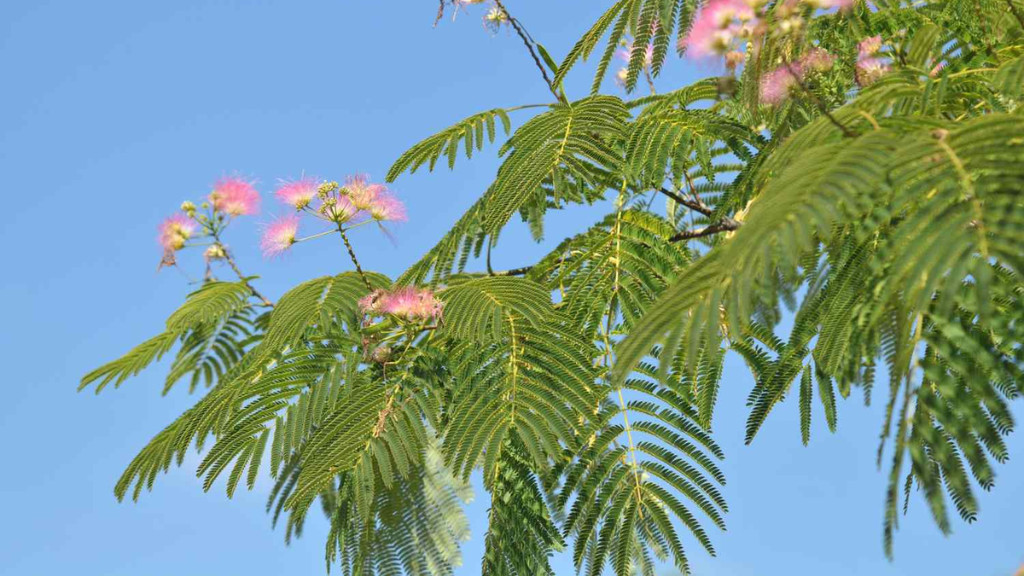
- Native Region: South Asia
- Leaf Type: Fern-like, bipinnate leaves
- Height: Up to 33 feet
- Floral Display: Red or orange flowers
- Climate Preference: Tropical to subtropical
- Special Features: Attracts hummingbirds, medicinal uses
The Hummingbird Tree, native to South Asia, is a tropical to subtropical tree that can grow up to 33 feet. Its fern-like, bipinnate leaves are complemented by red or orange flowers that attract hummingbirds, as the name suggests. The tree has various medicinal uses and is a popular choice for those looking to add both beauty and functionality to their gardens.
Frequently Asked Questions:
What is a Japanese fern tree?
The Japanese Fern Tree is a misnomer; it’s neither a fern nor native to Japan. Originating from East Africa and South Asia, this tree is known for its dense, bright-green, fern-like leaves. It’s an evergreen species that thrives in warmer climates and can produce white clusters of blooms and sometimes even small inedible berries.
What Australian tree has fern-like leaves?
The Fern-Leaved Wattle is a native Australian tree with leaves that closely resemble those of a fern. It’s part of the legume family, Fabaceae, and can grow up to 50 feet. The tree produces bright yellow flowers from autumn to late spring.
Do trees with fern-like leaves have any meaning?
While there’s no universally accepted symbolic meaning for trees with fern-like leaves, many people associate them with the same qualities attributed to ferns—happiness, growth, and natural beauty. Their unique foliage often adds an exotic and lush feel to landscapes.
Are there any evergreen trees with fern-like leaves?
Yes, several trees with fern-like leaves are evergreen, including the Royal Poinciana and the Fern Pine Columnar Tree. These trees maintain their lush, green foliage throughout the year, making them ideal for year-round greenery.
Are there any trees with fern-like leaves and pink flowers?
The Mimosa tree fits this description perfectly. Native to southwestern Asia and the Middle East, this tree features fern-like, bipinnate leaves and unique pink, puffball-like flowers. It’s a fast-growing, drought-resistant tree that thrives in warm, temperate zones.

